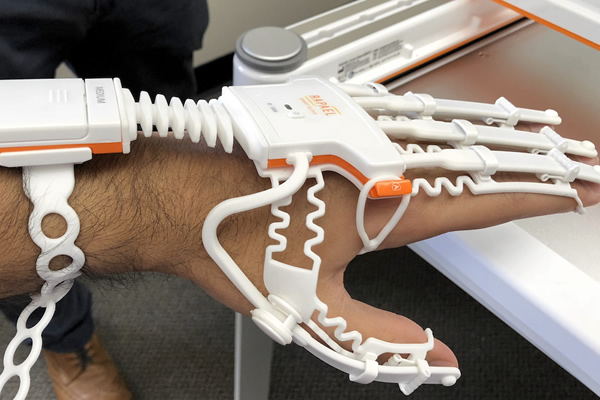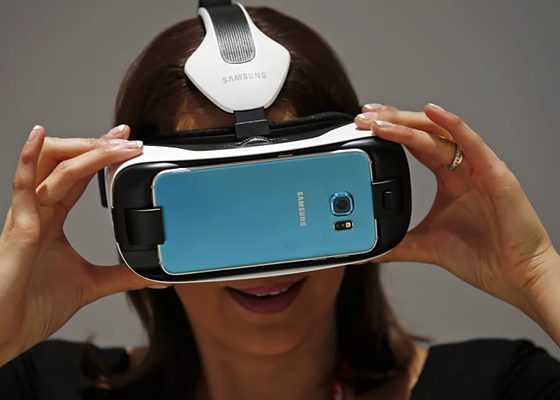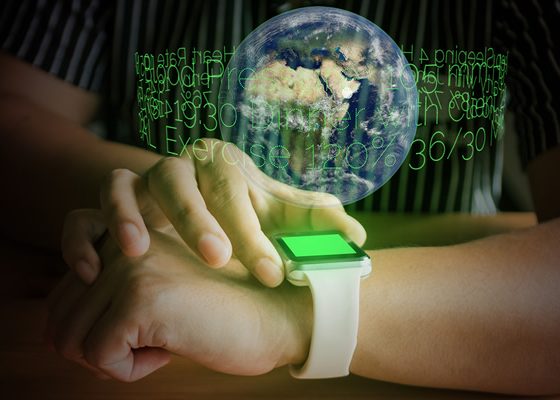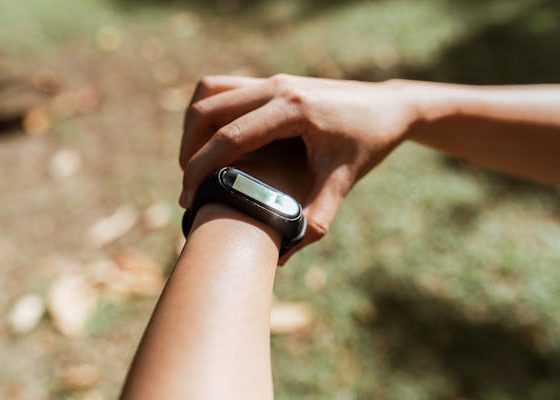
The landscape of rehabilitation is undergoing a remarkable transformation, thanks to the infusion of cutting-edge technology. In this article, we’re diving into the realm of wearable technology for rehabilitation, exploring its myriad benefits, diverse applications, associated challenges, and remarkable success stories.
The Evolution of Rehabilitation
Rehabilitation, traditionally defined as the process of restoring an individual’s lost capabilities, has evolved into a multifaceted discipline. It extends beyond physical therapy and encompasses various domains such as cardiac rehabilitation, pulmonary rehabilitation, and neurorehabilitation. The conventional methods have now been complemented by the integration of wearable technology for rehabilitation, offering a new paradigm in the world of recovery.
The Role of Technology in Rehabilitation
Technology, which has infiltrated almost every facet of our lives, is not to be left behind in healthcare. The marriage of technology and rehabilitation is enhancing the recovery journey for patients. Wearable technology for rehabilitation is emerging as a powerful catalyst, providing unprecedented advantages.
The Benefits of Wearable Technology for Rehabilitation

Improved Patient Compliance
Real-time Monitoring
Personalized Rehabilitation Plans
Personalized Rehabilitation Plans leverage the capabilities of wearable technology for rehabilitation by tailoring interventions to individual needs, enhancing the efficacy of recovery processes. These plans utilize data collected from wearable devices, such as accelerometers and biosensors, to monitor patients’ movements, vital signs, and progress in real time.
By analyzing this data, healthcare providers can develop customized rehabilitation programs that address specific deficits and goals, optimizing outcomes for each patient. Through continuous monitoring and feedback, wearable technology enables adjustments to be made dynamically, ensuring that rehabilitation plans evolve with the patient’s progress and changing needs.
This personalized approach fosters greater engagement and adherence to therapy, ultimately facilitating more efficient and effective recovery from injuries or medical conditions.
Data-Driven Insights
Wearable technology for rehabilitation facilitates data-driven insights by continuously monitoring patients’ movements, biometrics, and activity levels. Through sensors embedded in wearable devices, such as smartwatches or motion trackers, comprehensive data regarding the patient’s progress, adherence to prescribed exercises, and overall physical condition are collected in real time.
This wealth of data enables healthcare professionals to gain deep insights into the effectiveness of rehabilitation programs, tailor interventions according to individual needs, and track recovery trends over time. By analyzing this data, clinicians can identify patterns, set achievable goals, and make informed decisions to optimize treatment plans, ultimately enhancing rehabilitation outcomes.
Wearable technology thus serves as a valuable tool in transforming subjective assessments into objective metrics, empowering both patients and healthcare providers with actionable insights for improved recovery and long-term well-being.
Cost-effectiveness
Wearable technology for rehabilitation offers a compelling advantage in cost-effectiveness by streamlining and optimizing the rehabilitation process. These devices, ranging from motion sensors to smart garments, enable remote monitoring and real-time feedback, minimizing the need for frequent in-person appointments with healthcare providers.
By facilitating home-based exercises and continuous monitoring of progress, wearable technology reduces healthcare expenses associated with traditional rehabilitation methods, such as clinic visits and manual tracking. Moreover, it empowers patients with greater autonomy in managing their recovery while still receiving professional guidance, ultimately enhancing adherence to treatment plans.
This cost-effective approach not only benefits healthcare systems by reducing overall expenditure but also improves patient outcomes by fostering a more accessible and convenient rehabilitation experience.
Types of Wearable Technology for Rehabilitation

Wearable Fitness Trackers
These compact devices, including wearable technology for rehabilitation, go beyond counting steps. They monitor heart rate, sleep patterns, and even oxygen saturation levels. In a rehabilitation context, they provide valuable data about a patient’s overall health, allowing for the adjustment of treatment plans.
Smart Orthopedic Devices
Smart braces and orthopedic aids have embedded sensors that provide real-time information about joint movement and stability, making them an integral part of wearable technology for rehabilitation. This is invaluable for patients recovering from injuries or surgeries that affect mobility.
Virtual Reality (VR) Rehabilitation
VR is not just for gaming. It’s also a potent tool for rehabilitation, especially when integrated with wearable technology for rehabilitation. By immersing patients in virtual environments, it encourages them to engage in therapeutic exercises with enthusiasm. It’s a delightful fusion of technology and therapy.
Exoskeletons
Exoskeletons are no longer confined to science fiction. They have found their niche in rehabilitation. These wearable robots, including advancements in wearable technology for rehabilitation, assist individuals with mobility issues in regaining their independence and improving their quality of life.
Motion Sensors
Real-world Applications
Stroke Rehabilitation
Stroke survivors often face significant challenges. Wearable rehabilitation tech aids them in regaining motor function, enhancing balance, and improving speech. It turns the long road to recovery into a manageable journey.
Orthopedic Recovery
Those recovering from orthopedic surgeries or injuries can benefit immensely from wearable orthopedic devices. These smart aids offer insights into the effectiveness of rehabilitation exercises and help in avoiding complications.
Neurological Disorders
Neurological conditions like Parkinson’s disease and multiple sclerosis demand precise and ongoing care. Wearable tech can assist patients in managing symptoms, tracking medication schedules, and even participating in remote telerehabilitation.
Cardiac Rehabilitation
After a heart attack or cardiac surgery, rehabilitation is essential. Wearable fitness trackers can monitor heart rate and activity levels, ensuring that patients exercise safely and effectively.
Pulmonary Rehabilitation
Patients with pulmonary conditions like COPD require tailored exercises to improve lung function. Wearable tech can guide them through these exercises and provide feedback on their progress.
Challenges and Considerations
Privacy Concerns
The vast amount of health data collected by wearable tech raises legitimate privacy concerns. Patients and healthcare providers must be vigilant about data security and compliance with privacy regulations.
Integration with Traditional Therapy
Wearable rehabilitation tech should seamlessly integrate with traditional therapeutic approaches. Healthcare providers need proper training to incorporate these technologies into patient care effectively.
Accessibility and Affordability
While the benefits of wearable tech are substantial, it’s crucial to ensure that these devices are accessible and affordable for a wide range of patients. This is particularly important in the context of healthcare equity.
Training and Education for Healthcare Professionals
Healthcare professionals need to stay updated on the latest developments in wearable rehabilitation tech. Proper training and education programs can help them harness the full potential of these innovations.
Success Stories
Patient Testimonials
Hearing firsthand accounts of patients who have benefited from wearable rehabilitation tech can be truly inspiring. It highlights the human side of this technological revolution.
Clinician Perspectives
Healthcare providers who have integrated wearable tech into their practice share their insights and experiences. Their perspectives shed light on the practical aspects of implementing these innovations.
Research Findings
Scientific studies and research findings corroborate the effectiveness of wearable rehabilitation tech. They provide empirical evidence of its impact on patient outcomes.
Future Developments and Potential
The future of wearable rehabilitation tech is promising. Advancements in AI, sensors, and connectivity will further enhance its capabilities, making it an indispensable tool in the field of rehabilitation.
Conclusion
The future of wearable technology for rehabilitation holds promising potential for revolutionizing the healthcare ecosystem. As this technology continues to evolve, its role in enhancing patient outcomes, reducing costs, and improving accessibility will expand significantly. Wearable rehabilitation tech empowers patients to actively participate in their recovery journey, transforming the rehabilitation process from a passive experience into an engaging endeavor toward restored health. This ongoing collaboration between technology and healthcare signifies a dynamic partnership with the potential to revolutionize how we approach rehabilitation and healthcare in general.






